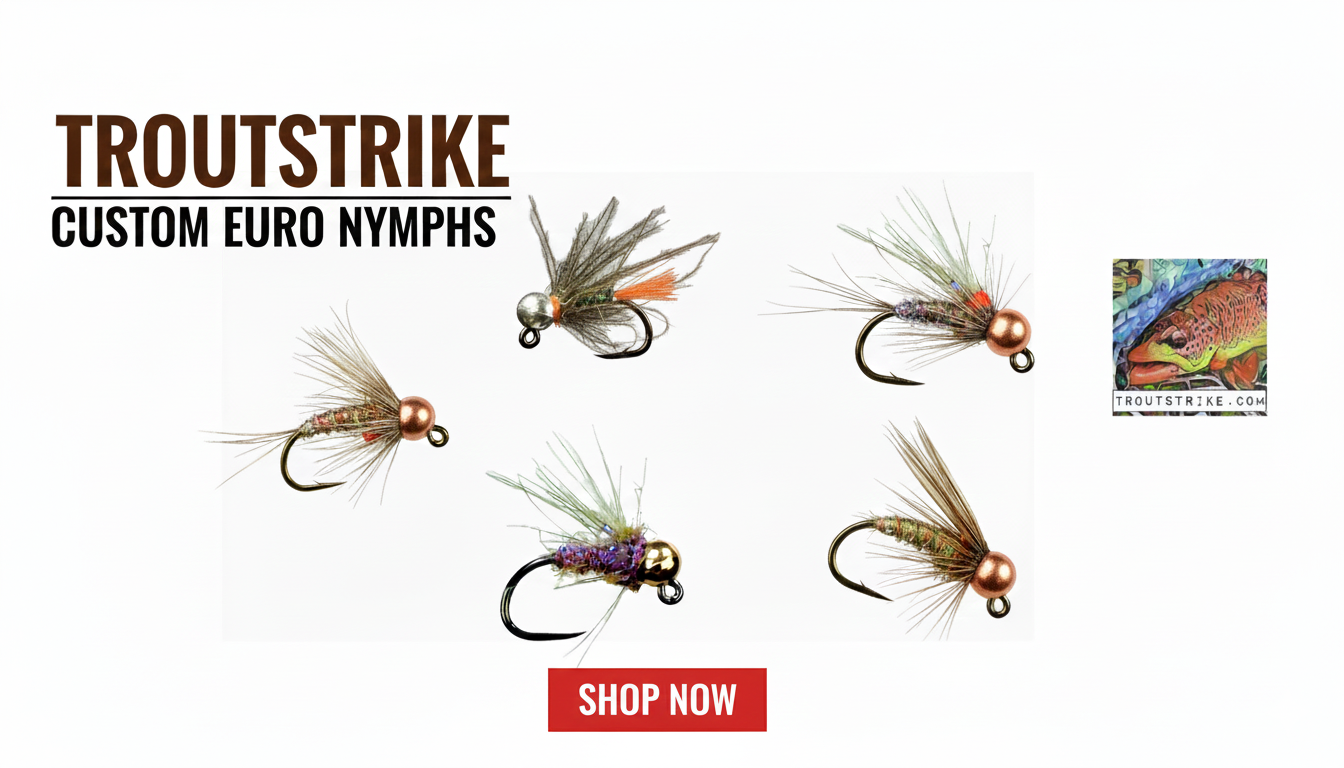When it comes to reliable fly patterns, Higa’s SOS is a standout. Its sleek design, subtle flash, and enticing movement make it a staple in fly boxes across the globe. Originally designed by Spencer Higa, this pattern is a proven fish-catcher that has stood the test of time. Today, we’ll dive into a modern variation of this classic fly. It is a version that has become one of my personal confidence flies. I fish it all year round. I’m excited to share both the tying process and a bit of its history.
This post contains step by step instructions to tie Higa’s SOS along with pictures. I’ve also included the video instructions at the end if you would prefer to learn it that way.

The Origins of Higa’s SOS
Spencer Higa developed the SOS fly while targeting trout in Utah’s waters. “SOS” aptly stands for “Save Our Skins.” The name reflects the fly’s ability to produce fish when nothing else seems to work. The original design was intended as a general attractor pattern, imitating various aquatic insects in the nymph stage. Over the years, it has been embraced by anglers for its simplicity, effectiveness, and versatility.
This variation builds upon the original’s fundamentals, introducing some updated materials and minor adjustments for a flashier, more durable fly.
Materials Needed for Higa’s SOS
To tie this pattern, you’ll need the following materials:
- Thread: 70 Denier black thread
- Hook: Hanak H 300 Czech Nymph Hook (size 14 used here, but sizes 14-18 work well)
- Bead: Fulling Mill 3.2 mm Slotted Tungsten Bead in Silver (round beads also work)
- Tail: Whiting Farms Coq de Leon fibers
- Ribbing: UTC silver wire
- Wing Case: Red Thin Skin
- Thorax: Hareline Peacock Black Ice Dubbing
- Legs: Black Crystal Flash
- Finish: Loon Flow UV resin

Steps for Tying Higa’s SOS
If you’re looking to tie Higa’s SOS, you’re in the right place! You can watch my step-by-step video tutorial for a detailed walk through, or follow the instructions I’ve outlined below to create this versatile nymph. Whether you’re a seasoned tier or just getting started, this guide will help you craft a reliable fly that’s perfect for fooling trout in a variety of conditions.
Prepare the Hook and Bead
Secure the slotted tungsten bead onto the hook, with the slot positioned upward. Lay a smooth thread base from behind the bead down to the start of the hook’s curve.

Tie in the Tail
Start by laying a thread base from just behind the bead to slightly past the start of the hook bend. Pull 7–10 Coq de Leon fibers for the tail (ideal for a size 14 hook to create a substantial tail). Use a pinch wrap to secure the tail fibers. Adjust as needed to ensure proper alignment. Wrap your thread back up to the bead, keeping it flat and even for a smooth base

Add the Ribbing
Insert your silver wire right into the slot of the bead. Secure it with a few thread wraps. Then, keep your thread flat and wrap it all the way back to the tail. Once you reach the tail, slide the thread under the tail and loop it back over. This secures everything in place and splays out the tail. Keep the tread flat. Wrap all the way back up to the bead. This will form the black body of the fly.

Segment the Fly
Segment the fly by making even turns with your silver wire all the way back to the bead. Secure the wire in place and helicopter the excess.

Create the Wing Case and Legs
Cut a thin strip of Red Thin Skin and tie it in just behind the bead. Add one piece of black crystal flash. Secure it on one side of the hook. Then loop it over the bead and secure it on the opposite side. Trim the loop to form legs, leaving final adjustments for later.

Build the Thorax
With the legs tied in, make a small dubbing loop with the black ice dubbing. Form the thorax by making three or four wraps with the ice dubbing.

Finish the Wing Case and Legs
Keeping the legs splayed, carefully fold the thin skin forward to create the wing case. Secure with a few thread wraps just behind the bead before snipping off the excess.
Apply the UV Resin
Coat the thread wraps and wing case with Loon Flow UV resin, then cure it with a UV light for added durability.
Stay Connected with TroutStrike.com
Follow TroutStrike.com on Instagram and Facebook @troutstrike for daily fly fishing tips, updates, and behind-the-scenes content.
Don’t forget to check out our YouTube channel for fly tying tutorials, nymphing techniques, and more. Subscribe and join the TroutStrike community today!

Thanks for reading! Spend more time on the water!
*Make sure to leave a comment below!
Have a great day!
Jeff Smecker






One thought on “How to Tie Higa’s SOS | A Must-Have Nymphing Pattern”